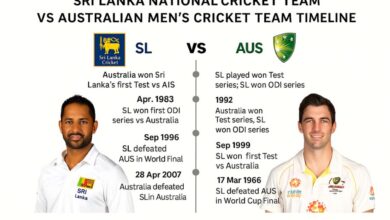SV Wehen Wiesbaden vs Bayern Munich Line-ups: Tactical Breakdown and Insights

On 27 August 2025, the DFB-Pokal’s opening round delivered one of those match-ups that make knockout football compelling: the mighty Bayern Munich versus third-tier SV Wehen Wiesbaden. The line-ups revealed as much about intent and tactics as the ninety minutes that followed. For Wehen, this was a chance to prove they belonged on a bigger stage; for Bayern, an early-season test of rotation, cohesion, and focus.
Wehen Wiesbaden: Organisation, Grit and Belief
SV Wehen Wiesbaden approached the fixture with realism and purpose. They knew that chasing possession against Bayern was futile. Instead, their line-up prioritised compactness, clarity of roles, and leadership on the field.
Their starting eleven:
- Florian Stritzel – goalkeeper and organiser of the back line.
- Niklas May – central defender, focused on physical duels.
- Sascha Mockenhaupt – centre-back and defensive leader.
- Justin Janitzek – part of the central defensive pairing, strong in the air.
- Jordy Gillekens – rounded out a defence built to absorb pressure.
- Ryan Johansson – midfielder with range and work rate.
- Donny Bogicević – distributor and link between defence and attack.
- Lukas Schleimer – offered versatility and tactical discipline.
- Tarik Gözüsirin – energetic wide presence.
- Nikolas Agrafiotis – attacking partner to Kaya, ready to chase every lost ball.
- Fatih Kaya – captain, striker, motivator, and eventual hero of the night.
This eleven showed Wehen’s coach had a clear plan: block space, frustrate Bayern’s rhythm, and capitalise on transitions. The double-striker system allowed Wehen to press selectively, while four midfielders kept defensive integrity.
Bayern Munich: Rotation but No Complacency
Bayern’s line-up reflected a blend of necessity and strategy. With league and European campaigns demanding squad management, they rotated personnel yet retained enough quality to dominate.
Their starting eleven:
- Jonas Urbig – starting in place of Manuel Neuer, given a chance to impress.
- Kim Min-Jae and Jonathan Tah – the central defenders, anchoring the line with authority.
- Raphaël Guerreiro and Sacha Boey – full-backs expected to push forward constantly.
- Joshua Kimmich – deep-lying playmaker and on-field general.
- Aleksandar Pavlović – providing youthful energy and defensive coverage.
- Lennart Karl – creative midfielder entrusted with linking play.
- Michael Olise – debutant winger, bringing flair and unpredictability.
- Luis Díaz – another wide forward, direct and attack-minded.
- Harry Kane – spearheading the attack, captain in spirit if not in armband.
Even on paper, this was no under-strength side. It was a rebalanced team, giving opportunities to fringe players while keeping the spine intact.
Tactical Shapes and Intentions
Wehen Wiesbaden lined up in a compact 4-4-2. Their shape condensed space between midfield and defence, forcing Bayern wide. Kaya and Agrafiotis pressed when Bayern’s centre-backs hesitated, otherwise dropping deep to screen passes into Kimmich.
Bayern’s 4-2-3-1 resembled a 4-3-3 in attack. With Kimmich orchestrating from deep, Pavlović supported transitions while Karl drifted into half-spaces. Olise and Díaz hugged the touchlines, cutting in to shoot or create overlaps with advancing full-backs. Kane operated between defenders, exploiting gaps that appeared when Wehen’s line stepped forward.
The contrast between structures summed up the duel: order versus ambition, resistance versus control.
The Match Narrative Framed by Line-ups
From kickoff, Bayern dictated possession. Their technical superiority and spacing stretched Wehen’s banks of four, but the hosts’ compactness held. The line-up’s discipline—especially Mockenhaupt’s leadership—ensured few clear openings early on.
In the 16th minute, Bayern’s approach bore fruit. A lapse from Wehen’s defence allowed Harry Kane to win and convert a penalty. The choice to start him, despite rotation elsewhere, looked justified. Kane’s composure from the spot reaffirmed his central role even in cup ties.
Bayern continued pressing. Guerreiro and Olise combined effectively on the left, while Díaz tested Stritzel repeatedly on the right. Urbig, though largely untested, maintained focus as Bayern dominated territory.
Wehen’s Response
The purpose behind Wehen’s starting eleven became evident after the interval. Fatih Kaya rallied his teammates, urging higher pressing and quicker transitions. The midfielders followed suit. Bogicević and Johansson began intercepting passes in Bayern’s half, feeding Agrafiotis and Kaya on the break.
Bayern doubled their lead early in the second half when Olise scored from a rebound—his selection vindicated. Yet the game was far from over.
In the 64th minute, Kaya’s persistence paid off. Exploiting a rare lapse from Kim Min-Jae, he fired a low shot past Urbig. Seven minutes later, chaos struck again: a long ball met confusion in Bayern’s defence, and Kaya poached the equaliser. The underdog’s line-up had delivered precisely as designed—two forwards pressing, midfielders backing transitions, defence holding firm long enough to invite errors.
The Decisive Moment
As the clock ticked past ninety, Bayern intensified pressure. Substitutions injected energy but the structure of the original line-up remained crucial. Kane, ever the professional, persisted even after missing a penalty earlier. In the fourth minute of stoppage time, he latched onto a loose ball and smashed home the winner.
The 3-2 result spared Bayern’s blushes but highlighted how Wehen’s line-up, not their budget, made them equals for long stretches.
Managerial Logic Behind the Line-ups
Both managers made selection decisions that mirrored their clubs’ circumstances.
Wehen’s manager knew he could not outplay Bayern technically. His priority was shape and attitude: experienced defenders to withstand waves of attacks, hard-working midfielders to compress space, and a captain-forward who embodied belief.
Bayern’s manager balanced rotation and competitiveness. Urbig’s inclusion gave rest to Neuer, while Boey and Pavlović gained valuable minutes. The decision to retain Kane, Kimmich, and key defenders preserved leadership and control. It was a calculated gamble—one nearly undone but ultimately successful.
Psychological Undercurrents
A line-up reveals not only tactical choices but emotional ones. For Wehen’s players, this was a once-in-a-season chance. Every starter had a point to prove. Kaya’s armband symbolised responsibility beyond scoring goals; he became the emotional engine of the team.
For Bayern, rotation introduced a different psychology. Fringe players sought to justify selection. Youngsters like Pavlović knew strong performances could alter their season’s trajectory. Meanwhile, established stars needed to demonstrate professionalism even against a lower-division opponent.
The clash of motivations gave the contest an undercurrent of tension rarely seen in early-round ties.
Defensive and Midfield Battles
Wehen’s back line played as a unit, rarely stepping beyond thirty metres from goal. The midfield quartet supported them diligently, sliding laterally to prevent Bayern from penetrating centrally. This system relied on collective effort; if one player broke the chain, spaces opened immediately. Their success in limiting Bayern’s clear chances until halftime validated the line-up’s structure.
Bayern’s midfield triad—Kimmich, Pavlović, and Karl—controlled tempo but occasionally overcommitted. Their pressing phases sometimes left space between lines, which Wehen exploited during transitions.
The Role of Experience and Youth
Both line-ups blended experience and youth, though for different purposes.
Wehen used experience defensively: Mockenhaupt, May, and Kaya carried leadership responsibilities. Youth filled energetic roles in wide and midfield areas.
Bayern’s youth focus appeared in the midfield pairing and full-back positions. Urbig, Pavlović, and Boey represented the next generation. Around them stood experienced pillars—Kimmich, Kane, Guerreiro—to steady nerves. This interplay between mentorship and opportunity illustrated Bayern’s long-term squad vision.
Lessons from the Starting Elevens
- Squad depth matters only when it performs – Bayern’s near escape showed that names alone do not guarantee fluency.
- Tactics must match mentality – Wehen’s compact 4-4-2 reflected not fear but intelligence.
- Leaders define balance – Kaya and Kimmich each anchored their teams emotionally.
- Cup games reward belief – Even when the quality gap is vast, cohesion can bridge it.
Substitutions and Adjustments
As fatigue set in, both sides turned to their benches. Bayern introduced fresh legs in midfield and attack, while Wehen added reinforcements to sustain intensity. However, the essential framework established by the original line-ups persisted.
Wehen’s substitutes maintained the same disciplined 4-4-2 shape. Bayern’s late changes—particularly bringing on additional attacking midfielders—tilted the game toward chaos but also created the decisive moment.
Post-match Reflection: The Line-ups in Retrospect
After the final whistle, the analysis centred less on the scoreline than on the wisdom of the initial selections. Wehen’s manager earned praise for tactical clarity; Bayern’s boss faced questions about defensive organisation despite victory.
For neutral observers, the game reaffirmed that cup football’s magic lies in such match-ups—where a well-prepared underdog starting eleven can push the giants to their limit.
Broader Implications
For Wehen Wiesbaden:
Their line-up showed they can challenge stronger teams when structure and spirit align. The same formation and personnel balance could serve them well in league play, fostering belief that discipline compensates for resource disparities.
For Bayern Munich:
The match exposed the thin line between necessary rotation and risky imbalance. Despite immense squad quality, cohesion cannot be taken for granted. The line-up’s attacking strength masked defensive vulnerabilities—issues that the coaching staff will surely address before deeper cup rounds.
The Human Side of Line-ups
Each name on the team sheet represents a personal story: a young goalkeeper’s first big chance, a captain’s lifelong dream, a world-class striker’s routine test of focus. Collectively, they form narratives that transcend tactics.
Florian Stritzel’s calm leadership, Fatih Kaya’s courage, Joshua Kimmich’s authority, and Harry Kane’s relentlessness all illustrate football’s human theatre. Line-ups are not just strategy—they are identity statements.
What the Line-ups Teach About Modern Football
In an era dominated by analytics, line-ups remain the purest expression of managerial belief. The Wehen–Bayern clash reinforces several truths:
- Football intellect matters as much as technical skill.
- Team chemistry often outperforms individual brilliance.
- Rotation must be strategic, not cosmetic.
- Cup competitions are emotional equalizers.
The Symbolism of Leadership
Fatih Kaya’s role deserves special mention. His presence as both scorer and captain epitomised the underdog’s fight. Meanwhile, Kimmich’s steadying influence exemplified professionalism. Both line-ups, in their own ways, revolved around these two figures—a reflection that leadership, not just talent, determines balance.
Conclusion: Line-ups as Windows to Football’s Soul
The DFB-Pokal tie between SV Wehen Wiesbaden and Bayern Munich will be remembered not merely for its five goals, but for how each team’s line-up embodied its character. Wehen’s eleven represented collective ambition and defiance; Bayern’s eleven represented depth and responsibility.
Through these line-ups, we witnessed football’s essence—discipline, resilience, creativity, and heart. The underdog’s structure almost toppled the titan’s power, proving once again that football remains gloriously unpredictable.
As fans and analysts pore over formations and substitutions, the truth endures: line-ups don’t just determine tactics—they tell stories of courage and control, of dreams and duty.
For more insightful football analyses and match breakdowns, visit Newsta, your trusted hub for authentic sports coverage and tactical storytelling.



